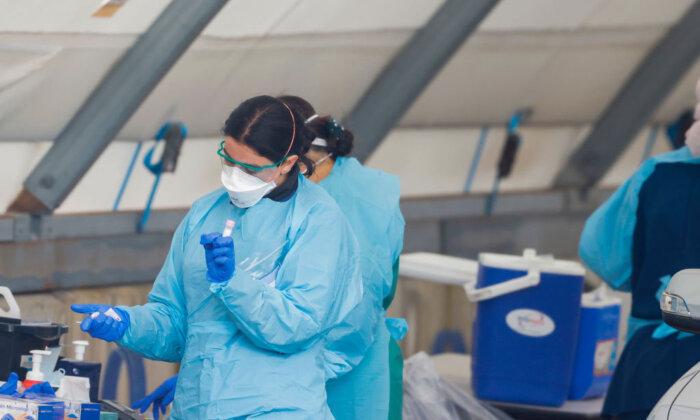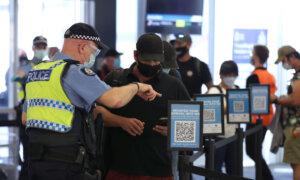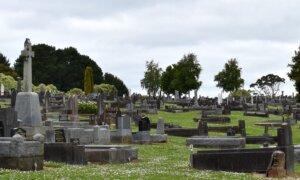The Australian Government Department of Health and Aged Care received and moderated more than 50,000 comments each month at the height of the pandemic.
The revelation is contained within the department’s response to the COVID-19 Response Inquiry, which has received more than 2,000 submissions.
The health department revealed that it worked to counter “misinformation” and moderated social media posts quickly.
“Comments were responded to on social media posts, correcting misinformation and directing people to the correct information on the health.gov.au, TGA and WHO websites.”
Australia’s health department said “prompt moderation” of social media posts enabled the Australian public to access safe and reliable information.
“The Department received and moderated over 50,000 comments per month during the peak of the pandemic,” the submission stated.
During the pandemic, the health department responded to more than 4,000 media inquiries, 150,000 COVID emails and received more than 50,000 calls from vaccine clinics, GPs and pharmacies.
Outlining key learnings from COVID-19, the health department said that as the pandemic progressed, COVID-19 fatigue set in and keeping up engagement “became challenging.”
Health authorities lamented that community sentiment showed “high initial trust in government and the COVID-19 messages before falling away.”
“Through the first half of 2020, published monitors indicated that the perception the Government was doing a good job managing COVID remained high before declining in mid-2020,” the department said.
“Confusion about messages primarily occurred when there was variation among jurisdiction in relation to the public health and social measures and vaccination requirements that differed with the nationally agreed guidance.”
In the later stages, the department “realigned messaging” to focus on priority groups and promote updated recommendations from the Australian Technical Advisory Group on Immunisation (ATAGI) on vaccines and oral antiviral treatments to high-risk communities.
While the department is still pushing out messages on COVID-19, the approach is now akin to the flu.
“The Department is still communicating key messages about COVID-19, but the approach is similar to other communicable diseases like influenza,” the health department said.
In the future, the department recommended national consistency, such as “establishing mechanisms to agree positions” and understanding the impact of “differing messages in the community.
Massive Social Media Engagement
The health department said its social media audience soared from 159,223 followers before COVID-19 to more than 1 million followers.Health authorities have published more than 19,000 COVID-19 posts on social media channels Facebook, X, LinkedIn, Instagram, and YouTube since January 2020.
“This resulted in more than 1.6 billion impressions and over 49.5 million direct interactions,” the department said.
Australia’s health authorities also said they partnered with social media and community organisations to produce “engaging educational videos” featuring people with profiles and well-known brands.
“Partnerships included Australian music group Teeny Tiny Stevies, podcasts like Happy Families, the V8 supercars and the ACT Brumbies,” the health department said.
“The Department attended more than 300 events to promote COVID-19 messaging. There were more than 9,300 shopping centre information kiosks helping more than 34,000 Australians with COVID-19 enquiries and vaccinations.”
In addition, the department’s vaccination update newspaper was relayed to more than 37,000 subscribers each week.
Nearly 66 Percent of Home Affairs Posts Referred to Social Media Companies Were Removed
Meanwhile, the Home Affairs department has revealed it referred thousands of posts to social media companies, and nearly 66 percent were removed.From March 16, 2020, to May 19, 2023, the department referred 4,726 social media posts to the digital industry for review, and 3,098 were actioned by social media companies.
The department received $62.8 million (US$41.4 million) to “strengthen Australia’s social cohesion and community resilience” in the budget.
Of this, $37.3 million (US$24.6 million) was allocated to “promote Australian values, identity, and social cohesion, and to counter malign information.”
Health Department Recommends Australia Consider Sovereign Capabilities for National Medical Stockpile
The health department noted Australia needs to have “adequate and reliable” supply channels for Personal Protective Equipment (PPE) and other critical equipment in a pandemic or health emergency.“This may include considering Australia’s sovereign capabilities to produce those goods,” the department said.
“National Medical Stockpile (NMS) procurements were largely successful during the pandemic. However, a stronger preparedness and established emergency procurement process will further support the government’s ability to respond quickly with PPE and other NMS supply.”
The health department noted it had made “significant progress” on this measure and secured “sovereign supply” for PPE and medical supplies.
“Preparedness is not limited only to COVID-19 and other respiratory diseases. The Department is also considering how to ensure the NMS is prepared for other emergencies,” the department noted.
Discussing COVID-19 testing, the department said it was “fundamental” to Australia’s suppression strategy and containing the spread of the virus.
Vaccine ‘Wastage’
Australia has also had an “oversupply of vaccines” since mid-2022 as demand fell. The department is now trying to lower waste but still ensure vaccines are available.“In January 2024 Australia’s wastage rate was 35.41%, remaining within the WHO acceptable levels (15% to 40%) for multi dose vials,” the department said.
Preparing For Any ‘Future Pandemic’
The health department said Australia’s response to the COVID-19 pandemic is “internationally and domestically considered to be strong, largely well-coordinated and having saved lives.”“A key priority for the Government and the Department of Health and Aged Care (the Department) is to ensure that Australia can respond to any future pandemics,” the department said.
There have been many learnings throughout COVID-19 that have led to new policies and programs of work that increase Australia’s preparedness for any future pandemics. Many of these are already underway in the Department and across Government.”
An interim Australian Centre for Disease Control (CDC) has been established to get ready for public health emergencies.
This interim CDC is undertaking training exercises, “improving the national public health surveillance system,” and building health security.
“The Australian CDC will further leverage the lessons from COVID-19 and be fundamental to Australia’s capacity to deal with future pandemics. It will boost national communication, coordination, and collaboration across jurisdictions, as well as build emergency response capacity and strengthen prevention, detection, and monitoring of communicable disease.”







